59% of consumers say that marketing emails have a positive impact on their buying choices. But with so much competition for those precious seconds of attention, how do you make your emails stand out? The answer: effective email marketing campaign management.
This article breaks down exactly what you need to do to get your emails opened, read, and – best of all – acted upon. We will also show you how to track your progress and pick the best email marketing tools to make things easier.
9 Actionable Strategies To Manage Your Email Marketing Campaign
Here are 9 highly effective email campaign management strategies. Keep an eye out for specific data you need to be familiar with.
1. Segment Your Audience

Traditionally, you might send one email blast to your entire list. But with segmentation, you divide your audience into smaller groups based on shared characteristics. This helps you deliver the right message to the right person at the right time. People are more likely to open and engage with emails that feel relevant to them.
There are many ways to segment your audience:
- Demographics: Age, gender, location – these basic details can help tailor your emails.
- Purchase history: Send targeted promotions based on past purchases or browsing behavior.
- Email engagement: Segment based on open rates and click-through rates to send more relevant content to engaged subscribers.
- Sign-up source: Did they subscribe through your website, social media, or an event? Cater your message based on how they found you.
Here’s how you can effectively use this email marketing strategy:
- Most email marketing tools have built-in segmentation features. Explore them to see what data you can easily use.
- Don’t overwhelm yourself with overly complex segments at first. Start with basic demographics or purchase history and see the results.
- If you sell across different platforms, use a multi-channel eCommerce management platform like EasyChannel to create even more granular segments. It leverages your purchase history, abandoned carts, and browsing behavior for better targeting.
- Experiment with different criteria and monitor the results to see what resonates best with your audience.
2. Customize To Captivate
Personalization creates a connection with your brand. It shows your customers you value them as individuals, not just email addresses on a list. This means more people opening your emails and clicking on your calls to action.
So, how do you personalize your emails? Here are powerful techniques to explore:
- Use dynamic content to swap out specific parts of your email based on customer data.
- Leverage customer data to suggest products or services based on past purchases or similar browsing behavior.
- Go beyond “Dear Valued Customer” and use the subscriber’s name in the greeting. It instantly creates a more personal tone and grabs their attention.
- Use Hyperise to create personalized email images and videos.
3. Hook Readers With Images & Videos
Text-heavy emails can be a snooze. Capture your audience’s attention and boost engagement with compelling visuals. Our brains process visuals much faster than text. They break up text, add personality, and help you tell your brand story in a more impactful way.
They can also be used to:
- Simplify Complex Topics: Infographics and explainer videos can condense complex information into easy-to-understand visuals.
- Showcase Products & Services: High-quality product images and short demo videos can bring your offerings to life.
- Evoke Emotions: Images that tell a story or tap into emotions will create a deeper connection with your subscribers.
- Build Trust with User-Generated Content (UGC): People trust other consumers more than brands. Include video testimonials from satisfied customers, like what Alexander Tutoring did with their video reviews. They included videos of parents who spoke about their children’s improved confidence and grades after using their tutoring services. Seeing real parents talk about the positive impact the tutoring had on their children can be far more convincing than simply telling them how great the service is.

Not all email clients display visuals the same way. Test your emails on different platforms to ensure proper rendering. Don’t forget to add alt text for your images. This provides context for subscribers who have images disabled and helps with SEO.
The real trick here is to make your visuals as impactful as possible. Hyperise empowers you to do just that. It lets you add dynamic layers that automatically populate with recipient data to create a one-of-a-kind experience for each subscriber. You can add images that automatically adjust to include your recipient’s name.
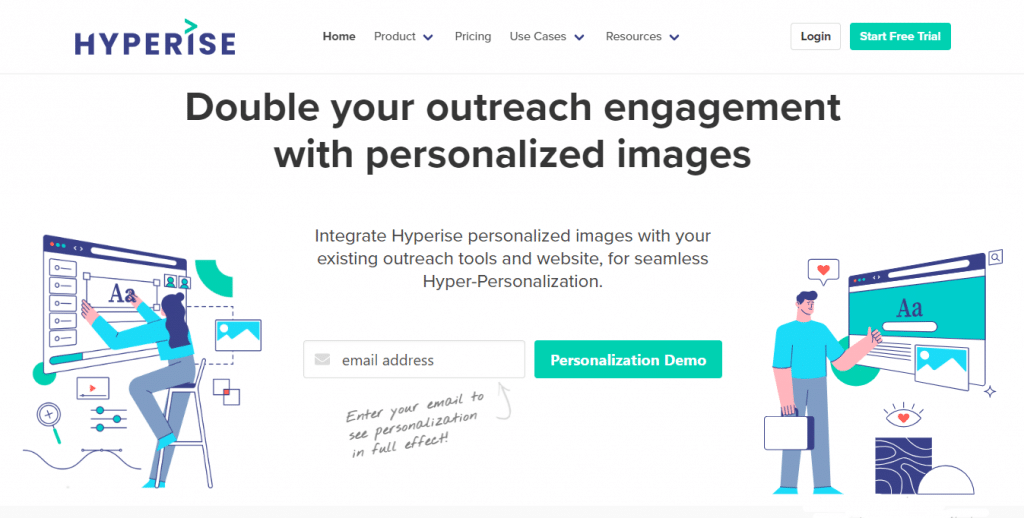
This level of personalization instantly grabs attention and makes your message stand out in a crowded inbox. It integrates seamlessly with your existing marketing tools so you can personalize at scale with minimal effort.
4. Test, Optimize, Conquer
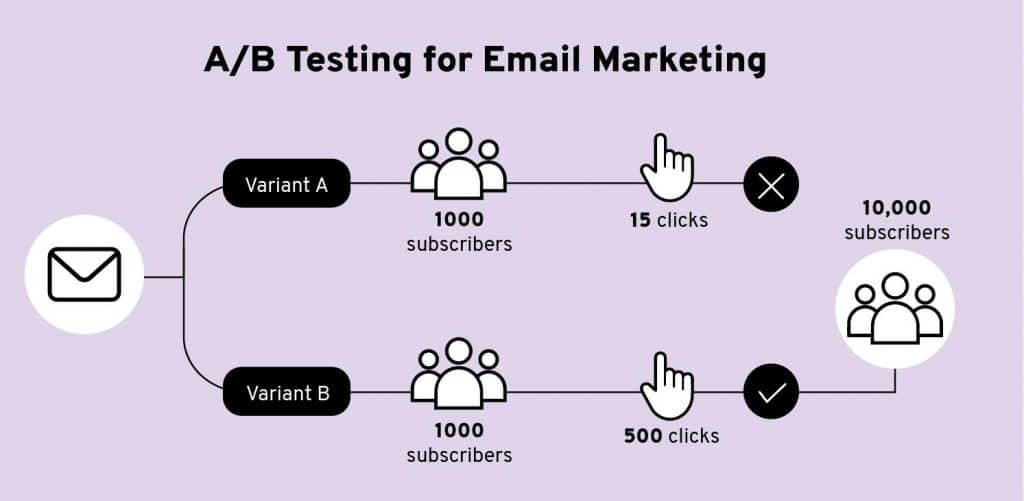
In A/B testing, you create 2 versions of an email with slight variations, like a different subject line or call to action button. Then, you send each version to a small segment of your list and see which one performs better. Your email is full of elements you can test:
- Try out 2 different subject lines – change the wording, length, or use some personalization to see which one gets more attention. This resource will help you write compelling subject lines to increase open rates.
- Experiment with button design, color, placement, and even the text itself. A strong CTA can significantly boost clicks.
- Test different layouts, image placements, and even the length of your email copy.
- The time you send your email can impact open rates. Test sending emails at different times of the day or even days of the week to see when your audience is most receptive.
Here’s how you can setup A/B testing:
- Select the email you want to test. This is your baseline version, called the “champion.”
- Pick up a challenger. It is the variation of the champion email with the element you want to test. Maybe it is a different subject line or a new CTA button design.
- Divide your list into smaller segments and send each version (champion and challenger) to a random sample within those segments.
- The size of your sample group is crucial for statistically significant results. Use a sample size calculator to help you figure out the right number of subscribers for your test.
5. Automate To Dominate
Email marketing automation lets you create pre-written emails that get delivered automatically based on specific triggers. This saves you tons of time and helps you nurture leads and build stronger customer relationships.
Many email marketing services offer user-friendly automation tools to create these workflows. With a drag-and-drop interface, you can set the triggers (customer signs up, abandons cart) and define the content for each email in the sequence.
There are different types of automated email campaigns:
- Drip Campaigns: These are a series of emails sent out over a set period, like a welcome sequence for new subscribers. Each email builds on the previous one, keeping your brand fresh in their mind and guiding them toward a desired action, like making a purchase.
- Transactional Emails: These emails are triggered by customer actions, like order confirmations, shipping updates, or password resets. They provide important information and keep your customers informed.
- Birthday Emails: A personalized touch that goes a long way. Send a special birthday message with a discount or exclusive offer.
- Win-Back Campaigns: Identify products that are in demand but have low sales velocity in your store. It can be tricky but you can check out this handy resource to find the most sought-after products. Once done, set up automated email sequences to re-engage customers who have shown interest in similar products or categories. Use special discounts or promotions to drive sales.
For best results:
- Map out the subscriber journey and define the emails you will send at each stage.
- Space out your emails to avoid overwhelming subscribers. Consider sending welcome emails immediately, while drip campaigns can be spread over weeks.
- Monitor your automated emails’ performance. See which ones resonate with subscribers and adjust your strategy based on the data.
6. Reach Every Inbox With Mobile-First Emails
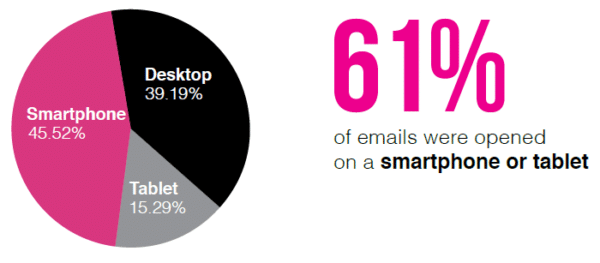
61% of all email opens happen on smartphones and tablets. If your email takes forever to load, isn’t formatted correctly for a small screen, or requires zooming in to read the text, it will be deleted.
People check their email on the go, in quick bursts. Mobile optimization ensures your emails display beautifully and function flawlessly on any device. Here are ways to get the best results:
- Use a responsive email template that automatically adjusts the layout for different screen sizes.
- Resize images for mobile viewing and use lightweight formats like PNG or JPEG.
- Get straight to the point with clear, concise messaging. Avoid long text blocks and break up important information with bullet points.
- Don’t send until you are 100% sure your email looks perfect on mobile. Most email marketing platforms offer built-in testing tools. Use them to preview your email on different devices and screen sizes.
7. Maintain A Good Email List Hygiene
A clean list ensures your emails reach active and relevant subscribers. Internet Service Providers (ISPs) track the sender’s reputation. A clean list with fewer bounces reduces spam complaints and improves your chances of landing in the inbox, not the spam folder.
There are ways to identify and remove inactive subscribers from your list:
- Schedule regular list cleaning sessions, at least quarterly.
- Use list verification tools that scan your list for invalid or risky addresses.
- Set a timeframe for inactivity, like no opens or clicks in the past few months. These subscribers are likely not interested anymore.
- There are 2 types: soft bounces (temporary issue) and hard bounces (permanent issue). Remove hard bounces immediately. You can try to re-engage soft bounces but if they continue to bounce, remove them too.
8. Add Call-to-Actions (CTAs) That Convert
The goal of your email marketing campaign is to get your subscribers to take action. A CTA that is clear and concise bridges the gap between your message and their next step. Strong CTAs share these key features:
- Make sure your CTA button stands out. Use contrasting colors, clear fonts, and sufficient size for easy clicking on any device.
- Use strong action verbs that tell subscribers exactly what to do next. Take a look at this email example from Breaking Eighty. They had a clear call-to-action (CTA) that lets you choose where to get their golf launch monitors.
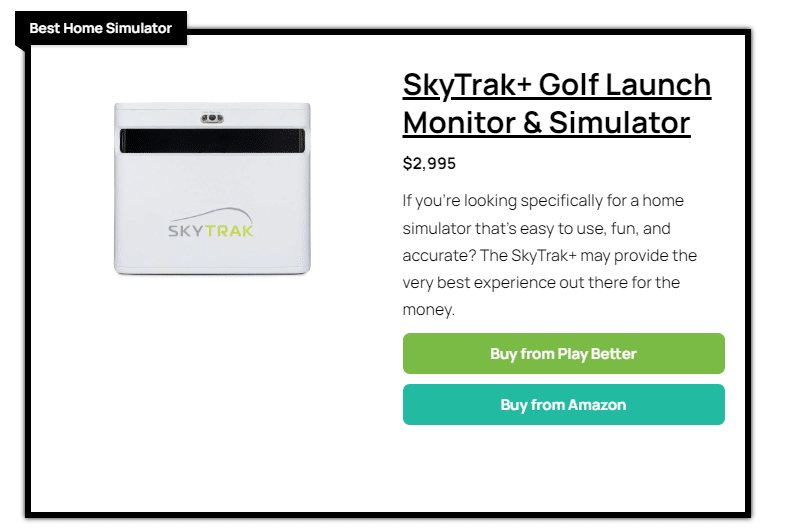
- Avoid lengthy phrases and focus on the core action you want subscribers to take.
- Put your CTA in a prominent location where subscribers are most likely to see it: end of your email, after a key benefit, or within a banner image.
- Include secondary CTAs throughout your email but avoid overwhelming subscribers.
9. Stay Compliant With Email Regulations
The world of email marketing operates within legal frameworks. Understanding them ensures you are playing by the rules and protecting your subscribers. Here’s a quick rundown of the key regulations you need to be aware of:
- General Data Protection Regulation (GDPR): This applies if you are emailing subscribers in the European Union (EU). GDPR focuses on strong data protection and user privacy.
- Controlling the Assault of Non-Solicited Pornography And Marketing (CAN-SPAM): This is the main law governing commercial email in the United States. It focuses on curbing spam and giving subscribers control over their inboxes.
Both GDPR and CAN-SPAM share several core requirements:
- You can’t email someone unless they have explicitly agreed to receive your messages. This usually involves a sign-up form with a clear checkbox.
- Always include a clear and easy unsubscribe option in every email. One click and they are off your list.
- Clearly identify your company and physical address in your emails. Don’t mislead subscribers about the sender or the content.
Here are the best practices to ensure ongoing compliance:
- Keep records of how and when subscribers opted-in to your list.
- Respect preferences. Don’t spam subscribers who have unsubscribed.
- Remove inactive subscribers and those who request removal to maintain a healthy list.
- Consider a double opt-in process where subscribers confirm their sign-up through a verification email. This strengthens consent verification.
How To Measure Your Email Marketing Campaign Management Success: 5 KPIs To Track
Let’s look at 5 KPIs that will tell you exactly what is working and what is not, so you know what tweaks to make for the best results.
I. Click-Through Rate (CTR)

- What This KPI Is For: Measures the percentage of email recipients who clicked on one or more links in an email. This metric helps in understanding how engaging and effective the email content and calls-to-action are at prompting user interaction.
- How To Understand The Data: A good CTR varies depending on your industry and campaign goals. However, generally aim for a CTR above 2-3%. Low CTRs suggest unappealing content, weak CTAs, or irrelevant information for the recipient.
II. Open Rate
- What This KPI Is For: The open rate measures the percentage of email recipients who opened an email. It helps gauge the initial appeal of your email content, particularly the effectiveness of your subject line.
- How To Understand The Data: Average open rates can differ by industry but a healthy open rate normally falls between 20-30%. A low open rate means your subject line strategy needs work or your list may contain inactive subscribers.
III. Conversion Rate
- What This KPI Is For: The conversion rate tracks the percentage of email recipients who clicked on a link within the email and completed a desired action, like making a purchase or signing up for a service. This metric helps in understanding the ultimate effectiveness of your email campaigns in driving business goals.
- How To Understand The Data: A good conversion rate is typically between 2-5%. Low conversion rates could be because of a mismatch between the email content and the subscriber’s expectations. But it normally indicates issues beyond just the email itself, like problems with your website checkout process or a poorly designed landing page.
IV. Bounce Rate
- What This KPI Is For: The bounce rate indicates the percentage of your total emails sent that could not be successfully delivered to the recipient’s inbox. It helps monitor the health of your email list and the effectiveness of your email delivery settings.
- How To Understand The Data: A healthy bounce rate usually falls below 2-3%. If it exceeds 5%, investigate and clean your list since it is normally associated with your list hygiene (see previous section on list cleaning) or sending practices.
V. Unsubscribe Rate
- What This KPI Is For: The unsubscribe rate shows the percentage of recipients who opted out of your mailing list after receiving an email. It is important to assess whether your content is relevant and appealing to your audience.
- How To Understand The Data: Industry benchmarks for unsubscribe rates vary but generally aim for a rate below 2%. A higher rate suggests you need to re-evaluate your email strategy.
6 Mistakes To Avoid In Your Email Marketing Campaign
Even the best email marketers make mistakes sometimes. Here are 6 common pitfalls to avoid and how to stay on the right track.
A. Not Using Custom Media
Generic visuals feel impersonal and fail to grab attention. Use original images, videos, or illustrations that reflect your brand identity. Even if there are DIY options, professional video editors like Vidpros can bring your vision to life with expertise and polish.
Sure, this might require more resources but the results are definitely worth it. They can help you develop video content that captures attention and boosts the impact of your email campaigns.
B. Buying Email Lists Instead Of Building Your Own
Purchased email lists are full of people who never signed up to hear from you. This can hurt your sender reputation, land you in spam folders, and even get your email account suspended.
So it is best to build your email list organically. Valuable content, signup incentives, and clear opt-in forms – all these will attract subscribers who are genuinely interested in what you offer. Make it easy for people to subscribe to your website and social media channels.
C. Using Spammy Tactics
Subject lines full of ALL CAPS, excessive exclamation points, and misleading promises scream “spam” and will likely land you in the junk folder. Plus, when people see spammy emails, they associate it with a negative brand image.
So be upfront about what is in your email. Avoid excessive punctuation and unnecessary hype. Don’t use false promises or pressure tactics to get people to click and only email people who signed up to hear from you.
D. Inconsistent Pricing Between Email & Landing Page
Seeing different prices creates distrust. People might think it is a bait-and-switch tactic and this confusion results in hesitation and missed sales. Most importantly, Inconsistent pricing looks sloppy and unprofessional. It can damage your brand reputation and customer loyalty.
Before sending your email campaign, make sure all advertised prices match exactly on your landing page. Update prices across all platforms when running sales or promotions.
If you use dynamic pricing tools like this cloud-based Amazon repricer, make sure your email content reflects the latest prices. Schedule updates or integrate your email platform with the repricing tool for automatic adjustments.
E. Not Including A Preheader Or Using A Misleading One
A blank preheader leaves people guessing what your email is about and a misleading preheader builds false expectations.
Briefly summarize your email’s content in 50 characters or less and tease the benefit your email offers without being misleading. Make sure the preheader complements your subject line for a cohesive message.
F. Neglecting To Use Professionally Written Content
Typos, grammatical errors, and unclear messages make your emails feel cheap and unprofessional. People are less likely to read or trust them and probably delete them right away.
Always double-check your emails for typos and grammatical errors before sending. Consider outsourcing your email copywriting to ensure top-notch quality. Outsourcing agencies like Genius connect you with the top 1% of skilled writers who know what it takes to deliver compelling and error-free email content.
3 Best Platforms For Email Marketing Campaign Management
Creating captivating email campaigns is only half the battle. You need email marketing software that lets you manage, track, and optimize your efforts. To help you with this, we compiled a list of the 3 best platforms to help you manage your email marketing campaigns.
i. Mailchimp

Mailchimp is a popular all-in-one email marketing platform with a user-friendly interface. It is a great option for beginners and established businesses alike.
Key features include:
- Audience segmentation for targeted email blasts.
- Pre-built templates to jumpstart your campaigns quickly.
- Drag-and-drop email builder for designing professional-looking emails.
- Marketing automation to send triggered emails based on subscriber behavior.
Pricing
Free plan available for up to 1,000 emails/month. Paid plans start at around $6.5/month.
ii. Zoho
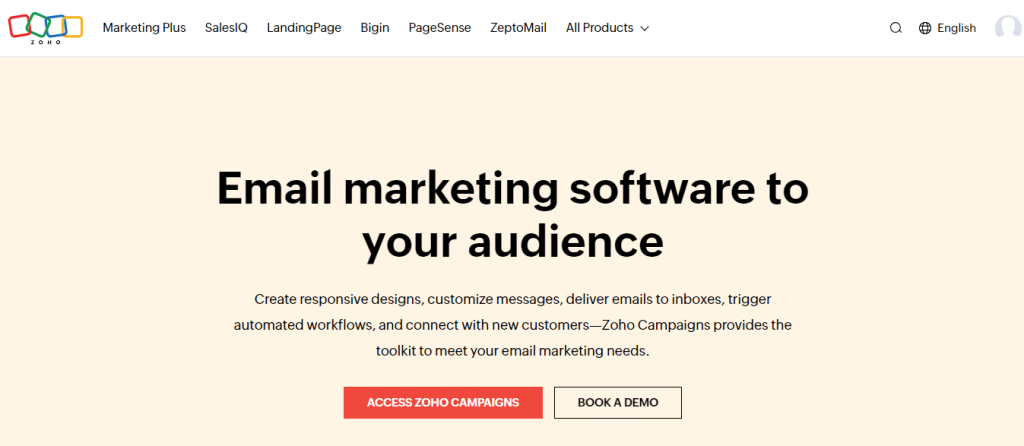
Zoho Campaigns offers a powerful email marketing solution. It is ideal for businesses that already use other Zoho products and want a central platform for their marketing needs. Here are some key features:
- Powerful reporting and analytics to track campaign performance.
- Pre-designed email templates with a clean and modern aesthetic.
- Team collaboration features for managing email marketing projects efficiently.
- Integrates seamlessly with other Zoho applications like CRM and social media management tools.
Pricing
Free plan available for up to 2,000 subscribers. Paid plans start at $3/month.
iii. ActiveCampaign
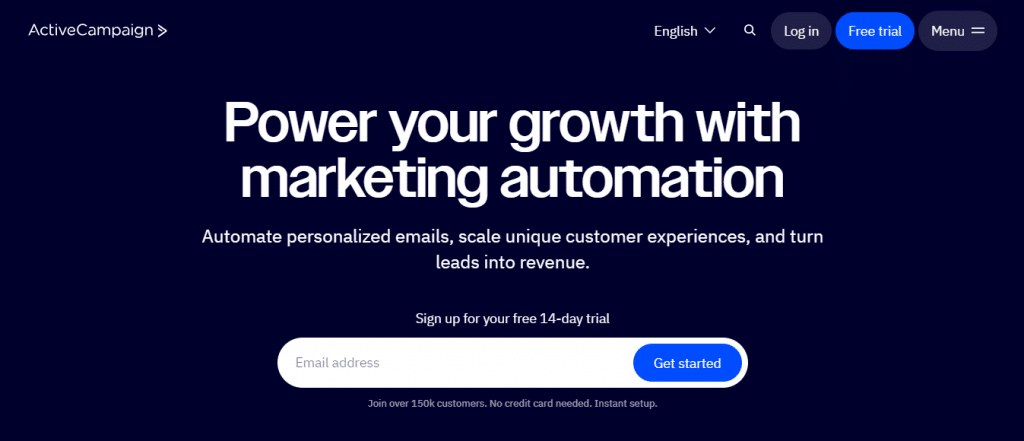
ActiveCampaign is a powerful platform for businesses looking to automate their marketing efforts and personalize the customer journey. Its key features include:
- Built-in CRM functionality to manage customer interactions.
- Award-winning automation features to build sophisticated customer journeys.
- Integrates with numerous business applications for a unified marketing experience.
- Powerful segmentation tools to personalize email content for different audience segments.
Pricing
Starts at $29/month for basic features. Pricing scales based on features and number of contacts.
Name | Best For | Pricing |
|---|---|---|
Mailchimp | All-in-one email marketing for beginners and businesses | Free plan available. Paid plans start at around $6.5/month. |
Zoho | Businesses using other Zoho products | Free plan available for up to 2,000 subscribers. Paid plans start at $3/month. |
ActiveCampaign | Automating marketing and personalizing customer journey | Starts at $29/month for basic features. Pricing scales. |
Conclusion
While flashy social media trends may come and go, email remains a powerful and consistent channel to connect directly with your audience. So invest in building quality relationships with your audience through effective email marketing campaign management and they will invest back in your business.
Hyperise is a powerful tool that lets you embed personalized images and videos directly into your emails. When you combine the power of email marketing with the personalization magic of Hyperise, you can build even stronger relationships with your audience, and ultimately, convert more leads into customers.
Try Hyperise for free or book a demo to learn more.
Author Bio:
Burkhard Berger is the founder of Novum™. He helps innovative B2B companies implement modern SEO strategies to scale their organic traffic to 1,000,000+ visitors per month. Curious about what your true traffic potential is?
- Author picture: Here
- Gravatar: vip@novumhq.com
Last Updated on April 25, 2024 by Ian Naylor